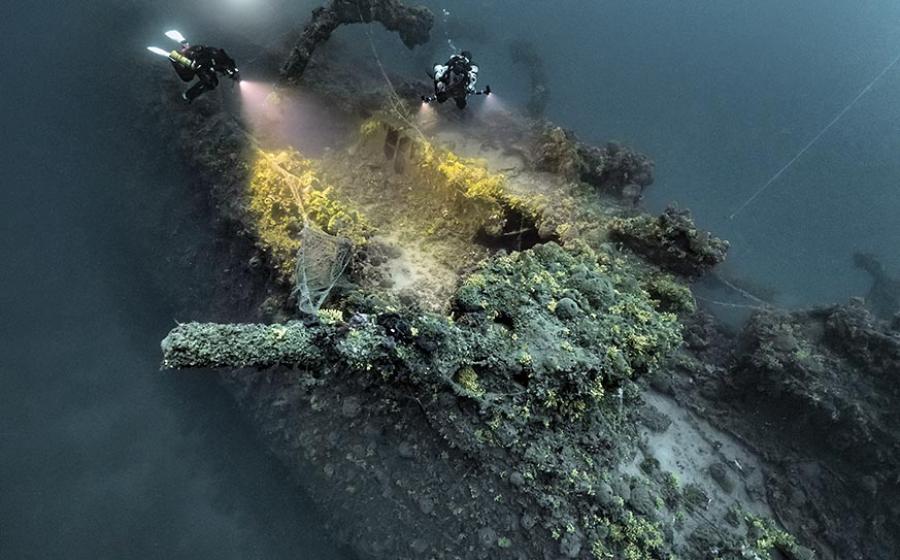Critter Hunt: Upside-Down Treasures

A yellowcheek basslet swims belly-up near a Caribbean wall.
Wall diving is the only way you are going to find four of the Caribbean’s fanciest little fish. The species, all members of the genus Gramma, are commonly known as basslets. At various locations in the Caribbean, divers can sight three of the four basslets during a single wall dive. The trick comes in knowing where to look.
Clusters of each species inhabit various depth ranges on the Caribbean walls. The secretive 2- to 3-inch fish lurk beneath the shadows of overhangs, where they often swim upside down — typically with their bellies scraping the ceiling.
Striking purple-and-yellow fairy basslets — by far the most common and the easiest of the genus members to find and approach — reside along the crests of walls, where they routinely venture out into the sunlight to pluck zooplankton from the currents. Just below the fairy basslets, beginning about 40 feet down, small colonies of blackcap basslets begin to appear. These purplish fish with black topknots seldom venture far from the confines of their craggy home.
At the 80- to 90-foot level, you enter the realm of the yellowcheek basslet (pictured), the shyest of the species. A hand light is necessary to spotlight the wary phantoms before they slip out of view.
Happily, there is a brand-new basslet to hunt for — it’s the golden fairy basslet, scientifcally described in 2010. This rare Caribbean treasure with a golden body and a long pair of violet ventral fins has been sighted only along walls in southern Cuba and Little Cayman Island to date.
Want to see more unusal sea life? Go to scubadiving.com.
More from Ned and Anna DeLoach:

Wall diving is the only way you are going to find four of the Caribbean’s fanciest little fish. The species, all members of the genus Gramma, are commonly known as basslets. At various locations in the Caribbean, divers can sight three of the four basslets during a single wall dive. The trick comes in knowing where to look.
Clusters of each species inhabit various depth ranges on the Caribbean walls. The secretive 2- to 3-inch fish lurk beneath the shadows of overhangs, where they often swim upside down — typically with their bellies scraping the ceiling.
Striking purple-and-yellow fairy basslets — by far the most common and the easiest of the genus members to find and approach — reside along the crests of walls, where they routinely venture out into the sunlight to pluck zooplankton from the currents. Just below the fairy basslets, beginning about 40 feet down, small colonies of blackcap basslets begin to appear. These purplish fish with black topknots seldom venture far from the confines of their craggy home.
At the 80- to 90-foot level, you enter the realm of the yellowcheek basslet (pictured), the shyest of the species. A hand light is necessary to spotlight the wary phantoms before they slip out of view.
Happily, there is a brand-new basslet to hunt for — it’s the golden fairy basslet, scientifcally described in 2010. This rare Caribbean treasure with a golden body and a long pair of violet ventral fins has been sighted only along walls in southern Cuba and Little Cayman Island to date.
Want to see more unusal sea life? Go to scubadiving.com.
More from Ned and Anna DeLoach:










